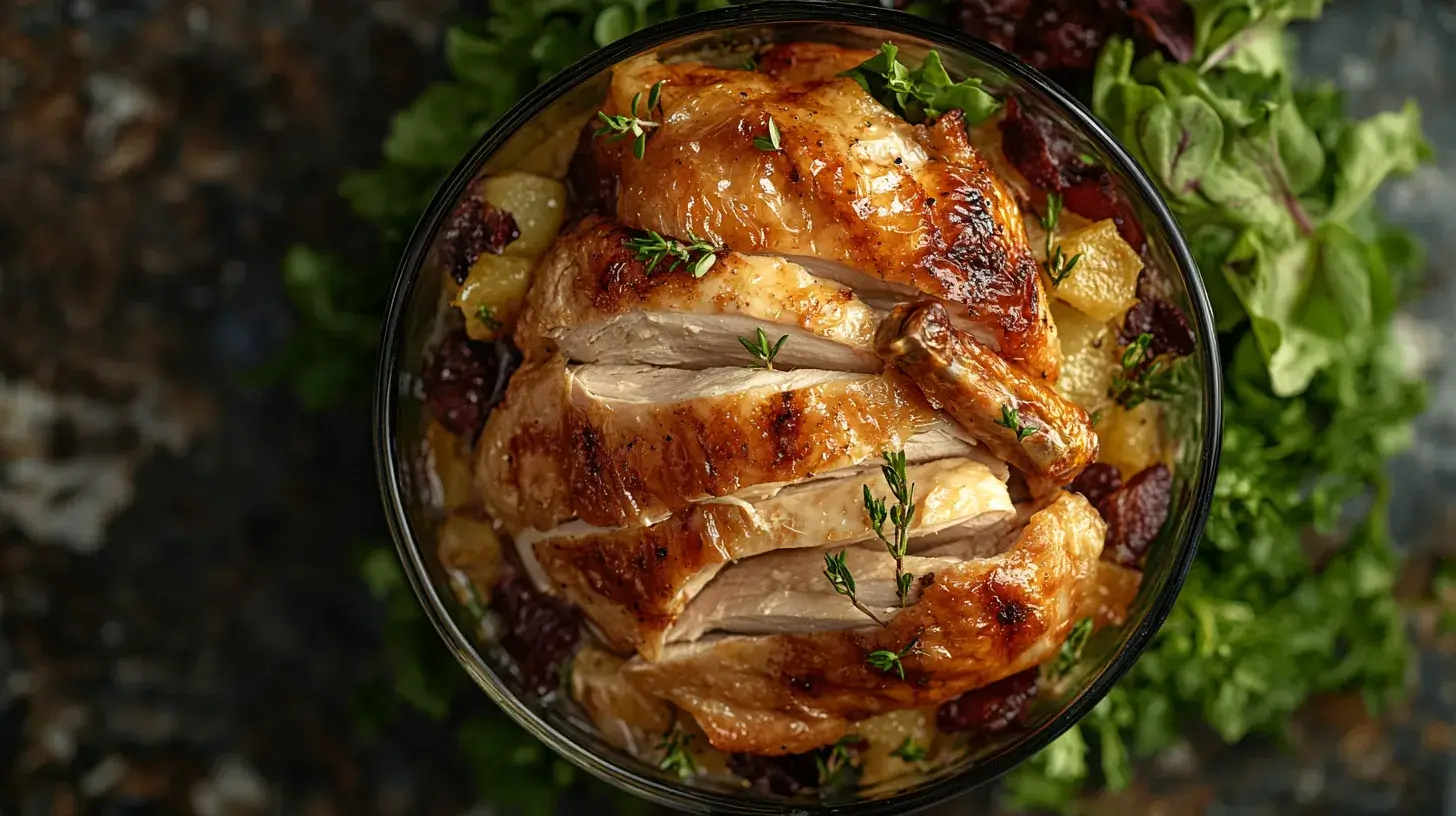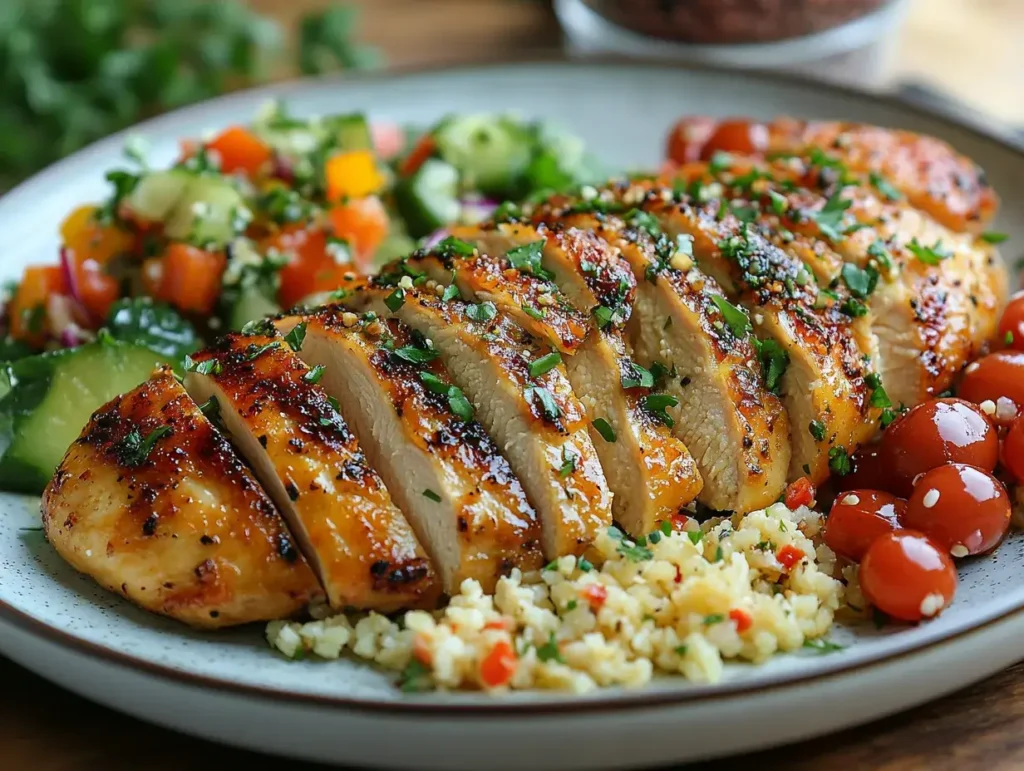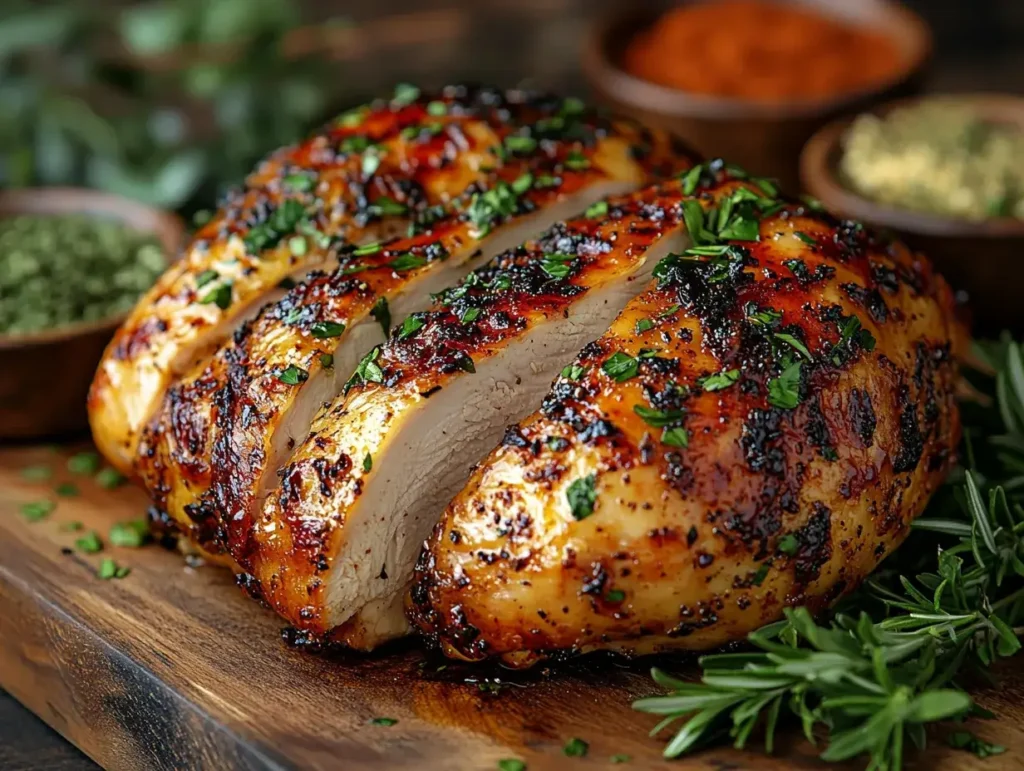Are you curious and asking yourself, “Can I freeze rotisserie chicken after 4 days?” In this article, you’ll find detailed guidelines to protect flavor, preserve freshness, and follow the best practices for long-term storage success.
Introduction and Key Concepts
Rotisserie chicken remains a hot favorite in the United States. People love it for its convenient, pre-cooked goodness. Also, it offers a quick solution for busy families who want an easy meal without spending hours in the kitchen. However, many of us get stuck with leftover chicken and wonder if it’s still safe to freeze after several days in the refrigerator.
Accordingly, the focus keyword “Can I freeze rotisserie chicken after 4 days?” emerges as a common question. This query arises because many standard guidelines tell us to refrigerate leftover chicken for only three or four days. Beyond that, it may become suspect. But is it truly off-limits once Day 4 rolls around?
Altogether, you’ll see that proper handling methods, safe storage temperatures, and packaging techniques can help you freeze cooked rotisserie chicken before it spoils. Nonetheless, you’ll also learn which steps to follow if you decide to freeze it right on Day 4. Additionally, you’ll get tips for thawing, reheating, and repurposing your chicken in new and creative ways.
If you’re seeking more official insights on cooking safety, you can review guidelines from the Centers for Disease Control and Prevention. Likewise, the Food Safety and Inspection Service of the USDA offers helpful reminders on storing and handling cooked meat. Finally, for general health advice regarding leftovers, the Mayo Clinic’s Food Safety Tips provide quick reference points.
In the subsequent chapter, we’ll unravel official food safety guidelines to better understand how they shape our approach to freezing and storing rotisserie chicken.
Understanding Food Safety Guidelines
Food safety guidelines ensure that cooked foods remain free from harmful bacteria. Comparatively, the U.S. Department of Agriculture (USDA) states that cooked poultry can be kept safely in the refrigerator for around three to four days. After that, bacteria can start multiplying, albeit sometimes slowly. Hence, many families question: “Can I freeze rotisserie chicken after 4 days?” The short answer is that while it’s possible, you must be absolutely certain the chicken hasn’t gone bad.
Official Recommendations for Cooked Poultry
Firstly, official bodies like the USDA emphasize chilling your food at 40°F (4°C) or below. Similarly, they advise placing leftovers in the fridge no later than two hours after cooking. If you’re dealing with a hot environment (over 90°F or 32°C), you have an even smaller window—just one hour. These recommendations come from proven data on bacterial growth. When cooked chicken sits at room temperature too long, microorganisms can flourish.
Additionally, government agencies suggest labeling stored items with the date. That way, you can easily track how many days have passed. Because memory alone can be faulty, a system of labeling reduces confusion. Sometimes, leftover food lingers at the back of the fridge, and you forget exactly when you cooked or bought it.
Bacterial Growth and Temperature Zones
Chiefly, the “Danger Zone” for bacteria is between 40°F (4°C) and 140°F (60°C). During this temperature range, microorganisms multiply quickly. Albeit cooking kills many bacteria, new ones can form once the chicken cools and is exposed to air or surfaces. This is why correct handling—like sealing leftovers in airtight containers—helps mitigate contamination.
Nevertheless, freezing at 0°F (-18°C) or lower greatly slows bacterial growth to nearly zero. This effectively puts the food in “pause” mode. However, if your chicken is already on the brink of spoiling, freezing will not magically fix that. So the question “Can I freeze rotisserie chicken after 4 days?” depends on whether the chicken has been stored safely. If it was well-handled, sealed, and quickly chilled, freezing on Day 4 might be acceptable. But if it sat out for hours or shows spoilage indicators, then no, it’s not worth the risk.
In the next installment, we’ll review how to store rotisserie chicken in the fridge, so you’ll know what conditions lead to safe or unsafe freezing scenarios afterward.
Storing Rotisserie Chicken in the Fridge

After buying a fresh rotisserie chicken, your first step is to get it home swiftly and into the fridge if you’re not planning to eat it right away. Certainly, the less time it spends in the “danger zone,” the better. Many stores keep these chickens under heat lamps or in warming cases. But once you place it into your cart, the cooling clock starts ticking.
Ideal Refrigerator Conditions
Your refrigerator should be set around 37–40°F (3–4°C). Henceforth, use a fridge thermometer to confirm. Many built-in thermostats can be off by a few degrees, so a separate thermometer helps you keep track. Another essential rule is to store the chicken in a sealed container or a zip-top bag. Doing so protects it from air exposure and other strong-smelling foods. Thus, you preserve the bird’s freshness and overall flavor.
Moreover, place the chicken in the coldest part of your fridge, usually near the back or on a lower shelf. This prevents frequent temperature fluctuations caused by the door opening. Additionally, store any sauces or drippings in separate containers to keep the meat from getting soggy.
Signs of Spoilage
Determining whether your chicken remains fresh enough to freeze on Day 4 rests on certain spoilage signs. So, keep an eye out for:
- Foul Odors: A sour or rotten smell indicates bacterial growth.
- Slimy Texture: Sticky or mucus-like feel can mean the meat is going bad.
- Discoloration: Greenish or grayish patches are major red flags.
If any of these appear, discard the chicken rather than freeze it. Also, trust your gut. If something seems off, it’s safer to dispose of it. Foodborne illnesses can be severe, so “better safe than sorry” certainly applies.
In many U.S. households, rotisserie chicken is a staple. Comparatively, it’s cost-effective, easy to prepare, and versatile. But the convenience factor can lull people into a false sense of security. A well-handled chicken can remain fresh for a few days, but not indefinitely. Hence, the question “Can I freeze rotisserie chicken after 4 days?” becomes relevant only if you stored it properly from Day 0 through Day 3.
Still, it’s wise to mark the date you purchased it. If you opened it and left it at room temperature for an extended period, you reduce its safe fridge life. Rotisserie chicken might still appear “normal” on the outside, while harmful bacteria multiply inside. Therefore, the four-day countdown typically starts from the time you placed the bird in the fridge, not from the moment you left the store.
Advancing to the following area, we’ll address the focus query in detail: “Can I freeze rotisserie chicken after 4 days?” Then, we’ll analyze some of the inherent risks and how to mitigate them.
Can I Freeze Rotisserie Chicken After 4 Days?
This question sparks debate among home cooks. The standard advice is to freeze cooked chicken well before the four-day mark. But, undoubtedly, real life happens. You might forget to freeze it earlier, or you planned to eat it yet changed your mind. Now it’s Day 4, and you want to salvage your leftover chicken.
Breaking Down the 4-Day Window
Generally, the USDA suggests that cooked chicken remains safe in the refrigerator for up to four days. If you freeze it earlier, you capture a fresher taste and texture. Day 4 is at the tail end of the recommended safe window. Notwithstanding, if the chicken still smells fine and shows no spoilage signs, you can freeze it. However, you should do so straightaway to keep further bacterial growth at bay.
Equally, consider how the chicken was stored. If you placed it in a sealed container and refrigerated it within two hours of purchase or cooking, you’re probably good. If you let it sit out for ages, those four days might be too long. Contrarily, if you only placed it in the fridge on Day 2, you might have less total “safe time” left.
Risks Versus Realities
Some people freeze chicken on Day 5 or 6 and claim no ill effects afterward. Albeit anecdotal, it underscores that some microbes might not cause an immediate reaction. Conversely, foodborne illnesses can be stealthy. Therefore, freezing on Day 4 is a calculated risk. For best practice, aim for Day 2 or 3, when the bird is still near peak freshness.
Furthermore, once you freeze the chicken, it remains safe indefinitely from a bacterial perspective. However, flavor and texture degrade over time. For best quality, use it within two to three months. Eventually, dryness or freezer burn can creep in, making it less palatable. Packaging is critical: an airtight container or freezer bag with the air pushed out will preserve more moisture.
If you decide to freeze on Day 4, do a quick quality check. Sniff, inspect, and maybe taste a small piece cold. If it passes these simple tests, wrap it up and freeze it promptly. If you have any doubts, discard it. Certainly, no meal is worth a possible foodborne illness.
In the next division, we’ll examine best practices for freezing cooked chicken. Simultaneously, we’ll show you how to package and label your leftovers to avoid freezer burn and confusion later on. Because if you’re going to freeze it, you might as well do it right.
Best Practices for Freezing Cooked Chicken

Freezing cooked chicken can be a lifesaver on busy weeknights. Certainly, leftover rotisserie chicken brings quick protein to your table. However, preserving its quality calls for strategic methods. By adhering to a few packaging tips, you can prevent both spoilage and freezer burn.
Packaging and Portioning Tips
- Cool the Chicken First
- Let the rotisserie chicken cool down to near room temperature.
- Place it in the refrigerator for a short while if it’s still warm.
- This reduces condensation in the packaging.
- Portion Control
- Cut or shred the chicken into manageable pieces.
- Store each portion in a separate container or bag.
- Henceforth, you can thaw only what you need rather than the entire bird.
- Choose Airtight Containers
- Use rigid plastic or glass containers with tight-fitting lids.
- Alternatively, opt for heavy-duty freezer bags.
- Likewise, remove as much air as possible before sealing.
- Label and Date
- Write the freeze date on the container.
- Also note the purchase date or day you cooked it.
- This helps you track how long it’s been in the freezer.
Avoiding Freezer Burn
Freezer burn occurs when cold, dry air contacts the surface of the meat. It changes the texture and flavor, leading to rough, grayish patches. Therefore, minimize air pockets and keep the chicken well-sealed. If you prefer vacuum sealers, they can be handy. Although not mandatory, vacuum sealing drastically cuts down on freezer burn.
Another tip is to freeze the chicken quickly. Placing it flat on a freezer shelf ensures faster solidification. Large lumps of meat take longer to freeze fully, which can compromise quality. Certainly, you might rearrange your freezer to create a space that allows air to circulate around your packed chicken.
Additionally, some cooks add a thin layer of sauce or broth to help lock in moisture. This technique can work well if you plan to use the chicken in soups or stews later. Nevertheless, be careful with liquids because they expand when frozen. Always leave some headspace if storing in rigid containers.
Moving to the next part, we’ll explore thawing and reheating. Once your chicken is frozen—whether on Day 4 or earlier—how you unfreeze it influences its final taste and texture.
Thawing and Reheating Methods
Fridge Thawing vs. Cold-Water Thawing
Thawing your leftover rotisserie chicken properly protects both flavor and food safety. First, fridge thawing is the gold standard. Place the packaged chicken in the refrigerator and let it thaw slowly for about 24 hours, depending on portion size. Because the meat remains below 40°F (4°C), bacterial growth remains minimal.
Alternatively, cold-water thawing is faster. Submerge the sealed chicken in cold water, changing the water every 30 minutes. Hence, your chicken may thaw in just a few hours, albeit you must cook it straightaway. This method is convenient but requires close monitoring to avoid letting the water become warm. Equally, ensure no water seeps into the package.
Microwave Defrost and Oven Reheating
Occasionally, you need your chicken defrosted ASAP. The microwave’s defrost setting can help. However, partial cooking often occurs, creating uneven hot spots. Thus, cook your chicken immediately after microwave thawing. You don’t want partially heated chicken to sit around, as bacteria could grow in those warmed areas.
When it comes to reheating, aim for an internal temperature of 165°F (74°C). Likewise, add a splash of broth or water if you worry about dryness, particularly if the chicken was frozen on Day 4. Nevertheless, short bursts in the microwave or a low-temperature oven can salvage moisture. Avoid overcooking the chicken, because dryness can develop fast.
In the next subsection, we’ll reveal creative, mouthwatering ways to use thawed chicken. You don’t have to settle for a plain dish. Rotisserie chicken—fresh or frozen—fits a range of flavors and recipes.
Creative Ways to Use Thawed Rotisserie Chicken
Rotisserie chicken isn’t just for lazy evenings. Indeed, its tasty, well-seasoned meat complements countless recipes. If you freeze it, there’s no need to worry about monotony. Once thawed, let your imagination run wild.
Meal Ideas and Leftover Inspiration
- Chicken Tacos
- Shred the meat.
- Sauté with onions, peppers, and taco seasoning.
- Serve in tortillas with salsa and cheese.
- Hearty Soups
- Add chopped chicken to broth with veggies, noodles, or rice.
- Season with garlic, thyme, and bay leaves.
- Simmer until flavors meld.
- Chicken Salad
- Combine shredded chicken with mayonnaise or Greek yogurt.
- Toss in celery, onions, and grapes for a sweet crunch.
- Serve in lettuce cups or on whole-grain bread.
- Casseroles and Bakes
- Layer chicken, cream sauce, and veggies in a baking dish.
- Top with cheese or breadcrumbs.
- Bake until bubbly and golden.
- Quesadillas
- Sandwich shredded chicken and cheese between tortillas.
- Brown on a skillet.
- Slice into wedges.
Enhancing Flavor After Freezing
Comparatively, thawed chicken might lose a bit of its succulence. Therefore, consider simmering it in flavorful sauces—like barbecue, buffalo, or teriyaki—to revive its moisture and taste. Similarly, adding fresh herbs and spices can mask any mild freezer taste. By mixing in new ingredients, you ensure every meal remains exciting.
Meanwhile, rotating cooking methods keeps dinner diverse. Try air-frying leftover chicken to re-crisp the skin or toss it into a stir-fry with soy sauce and vegetables. Indeed, the possibilities are endless. In the next phase, we’ll address popular questions about storage timelines, specifically for rotisserie chicken in the fridge and on the bone.
Frequently Asked Questions (FAQ)
How long is cooked rotisserie chicken good for in the fridge?
Cooked chicken remains safe for three to four days if kept at or below 40°F (4°C). However, many factors—like how quickly you chilled it—can shorten this window. If it still looks and smells fresh on Day 4, freezing might be viable, depending on how it was handled. Nonetheless, earlier freezing leads to better quality.
Rotisserie chicken in fridge for a week
Storing rotisserie chicken in the fridge for a week is risky. Generally, guidelines state that Day 4 is the limit. Past that, bacterial activity can become significant, raising the likelihood of spoilage and foodborne illness. If you cannot eat the chicken within four days, it’s best to freeze it sooner.
How long is rotisserie chicken good for on the bone?
Keeping chicken on the bone can influence its moisture, helping the meat stay juicy. Still, the overall safety timeframe remains roughly the same: three to four days in the fridge. If you plan on using the bones for broth or soup, remove the meat first, then freeze the bones in a separate bag. Therefore, you can prolong the usefulness of the chicken without risking spoilage.
Moving forward to the next topic, we’ll consolidate key insights in the final portion. You’ll discover a succinct recap and some practical pointers to keep your rotisserie chicken experiences safe, satisfying, and easy.
Final Thoughts and Conclusion
Dealing with leftover chicken often brings up that pressing question: “Can I freeze rotisserie chicken after 4 days?” The best answer hinges on how well you stored it during those four days. Certainly, if it shows no signs of spoilage and smells fine, you may freeze it. But for maximum flavor and safety, freeze it earlier—preferably around Day 2 or Day 3.
Moreover, having a system for labeling and dating leftovers can remove all guesswork. If you consistently store your cooked chicken in airtight containers, you preserve its taste and texture far better than if you leave it in loose packaging. Furthermore, when you eventually thaw and reheat, ensure the internal temperature reaches 165°F (74°C). That step guarantees you kill off any lingering bacteria.
Whether you’re a busy parent, a college student, or someone who simply loves convenience, leftover rotisserie chicken can be a meal-saver. Altogether, it’s versatile enough to morph into tacos, casseroles, salads, and more. If you freeze it properly, you’ll have pre-cooked protein ready to go at a moment’s notice.
Ultimately, mindful handling and immediate refrigeration are your greatest allies. If you’re uncertain about the chicken’s condition on Day 4, it’s safer to toss it. However, if you followed all the guidelines—chilling it fast, storing in sealed containers, and keeping the fridge at the right temperature—freezing might still be an option. By adopting these habits, you’ll rarely worry about your rotisserie chicken’s fate, because you’ll have confidence in your method from day one.







